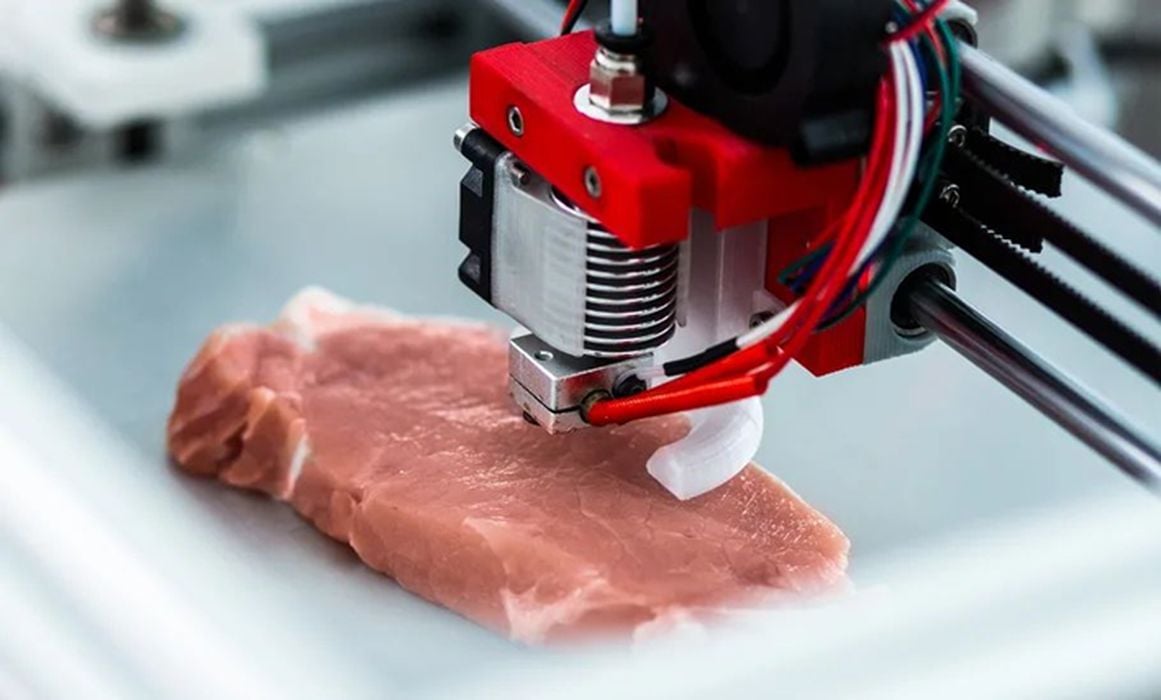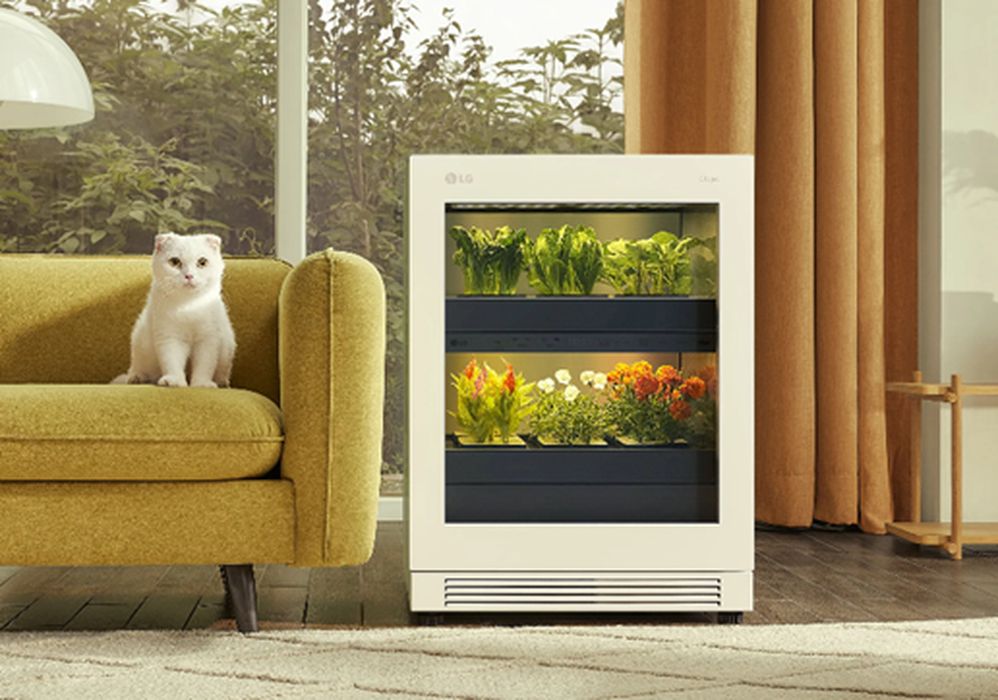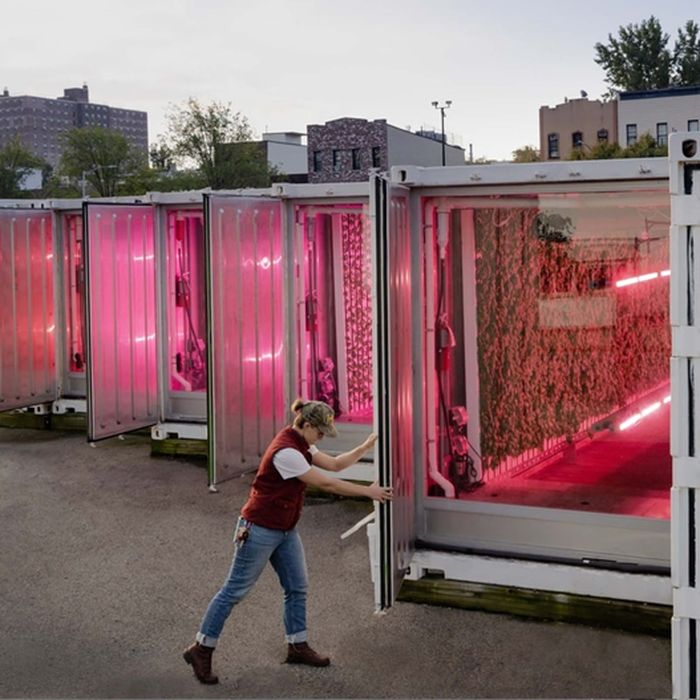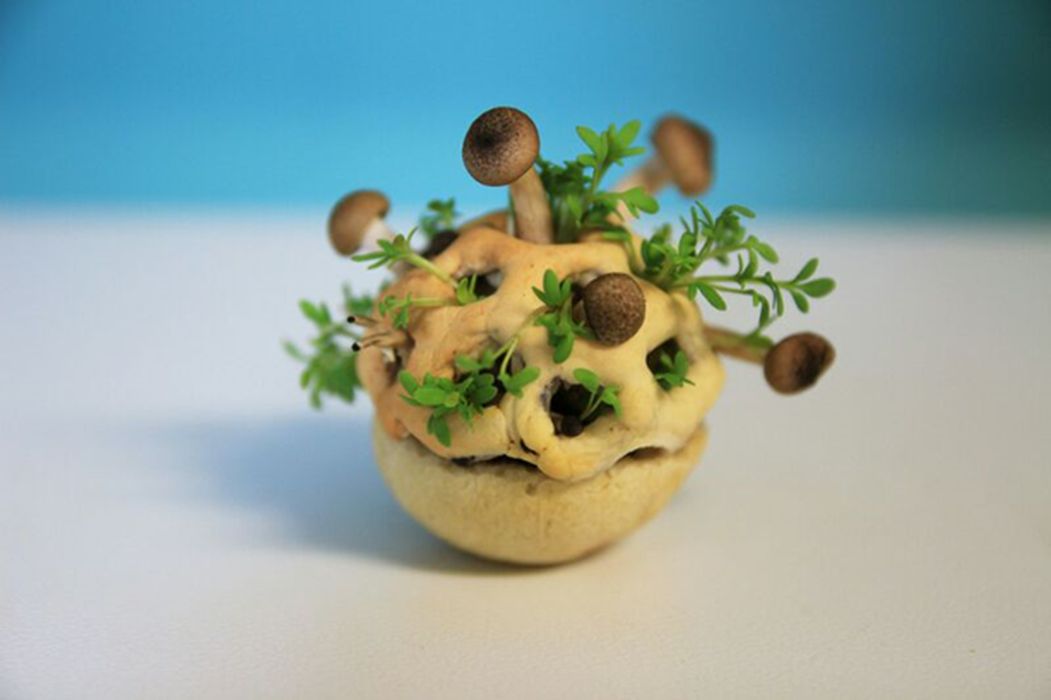
Charles R. Goulding and Preeti Sulibhavi explore 3D printing for space food production.
As NASA plans longer-duration missions deeper into space, finding ways to efficiently pack enough nutritious food is a top priority. Transporting provisions over vast distances is hugely expensive, and perishable foods won’t last years inside a spaceship.
One pioneering example is a 3D printed beefsteak developed by Invitro, a Russian medical technologies company. Using a novel technique called additive biomanufacturing, Invitro produced a tissue-like structure very similar to actual steak cuts. This “steak” derives from fatty acids, amino acids, sugars, and water as feedstock. Crucially, the raw materials can originate from recycled carbon dioxide or agricultural byproducts, enabling sustainable production with minimal environmental impact.
In initial taste tests, employees rated Invitro’s printable steak on par with conventionally prepared meat. Moving forward, the company plans to enhance its nutritional profile and flavor. The ability to accurately customize textures and shapes via 3D printing opens up possibilities for space-optimized dishes that would be unrealistic with traditional food production methods.
NASA is putting sustainable food for space front and center. Just last year, NASA awarded the winners of their Deep Space Food Challenge, an initiative meant to design emerging food production technologies that could be used in Space for extended voyages. These methods could also address food insecurity on Earth. Three of the winners were projects that designed methods of producing foods, two were growth systems and three were a combination of bioagriculture systems.
Beyond imitating staple foods from Earth, scientists are also exploring how 3D printing could generate novel nourishment options using extraterrestrial resources. Cyanobacteria, for instance, are tiny organisms that engage in oxygenic photosynthesis like plants. Researchers at tech startup BigRedBites developed a technique to 3D print artificial soil, then introduce cyanobacteria to kickstart chemical processes reminiscent of agriculture.
In a spaceship or future lunar/Martian base, these bioreactor chambers fed by sunlight and carbon dioxide could continuously yield microgreen vegetables, rich in nutrients. Compared to pre-packaged ingredients, fresh produce enhances nutrition as well as psychological wellbeing for isolated, confined astronauts. BigRedBites co-founder Tyler MacCubbin notes that this approach “could be used in the future by NASA for long-term space flight or permanent human habitats on the Moon and Mars.”
We are highlighting two distinct companies exploring methods for food in space.
LG Tiiun
Korean headquartered Lucky Goldstar (LG) released an exciting new electronic appliance for residential interior plant gardening called the Tiiun, meaning “to sprout” in Korean. The Tiiun, is essentially an aquafarming system with internal systems for temperature control, watering, and air purification.

Designed as a completely self-contained unit, LG Tiiun holds two shelves that can each carry up to six all-in-one seed packages along with three different kinds of seed kits. With each seed package, containing 10 holes for seed germination, consumers can grow a myriad of greens simultaneously for garden-to-table food in only four to eight weeks. This is faster than traditional growth methods with less mess thanks to the magic of technology and LG’s advanced innovation.
Square Roots
Offering climate-controlled, indoor, vertical farms, reliably and responsibly grown, Square Roots is a high-quality local farm all year round. Using sustainable practices such as repurposing existing urban infrastructure and growing produce inside refurbished, upcycled shipping containers, Square Roots farms use substantially less water and land in comparison to conventional farms.
Yet another avenue under examination relies on fungi as a protein and micronutrient source for space. Scientists at Northwestern University engineered edible mycelium bricks by adding fungal tissue to a substrate of agricultural residues like corn stalks or dried distiller’s grains. Besides being nutritious, these mycobiomes double as structural materials for insulation or radiation shielding.

Lead researcher Abigail Caine foresees 3D printed bricks defeating two birds with one stone: “You can build habitats, feed astronauts, and recycle waste all at the same time.” Her team now plans to assess whether yeast or other microbes could also fulfill similar functions aboard spacecraft.
In the Deep Space Food Challenge, mentioned earlier, several winning teams utilized fungi and mushrooms to produce a fungal base that can grow well in low gravity environments so different foods can be grown as well.
Boosting the diversity and resilience of space agriculture is a priority as missions venture farther into the solar system. 3D printing lends itself beautifully to this challenge, empowering on-demand fabrication from recycled feeds while integrating seamlessly with hydroponics and other cultivation platforms.
Other researchers are leveraging 3D printing technology to transform recycled plastic and other materials into nourishing meals fit for astronauts.

The Research & Development Tax Credit
The now permanent Research and Development (R&D) Tax Credit is available for companies developing new or improved products, processes and/or software.
3D printing can help boost a company’s R&D Tax Credits. Wages for technical employees creating, testing and revising 3D printed prototypes can be included as a percentage of eligible time spent for the R&D Tax Credit. Similarly, when used as a method of improving a process, time spent integrating 3D printing hardware and software counts as an eligible activity. Lastly, when used for modeling and preproduction, the costs of filaments consumed during the development process may also be recovered.
Whether it is used for creating and testing prototypes or for final production, 3D printing is a great indicator that R&D Credit eligible activities are taking place. Companies implementing this technology at any point should consider taking advantage of R&D Tax Credits.
Conclusion
As NASA consultant Lynn Rothschild described: “3D printing really facilitates innovation, and that infectious ability to improve and iterate very rapidly will be critical for sustainable space habitation.”
